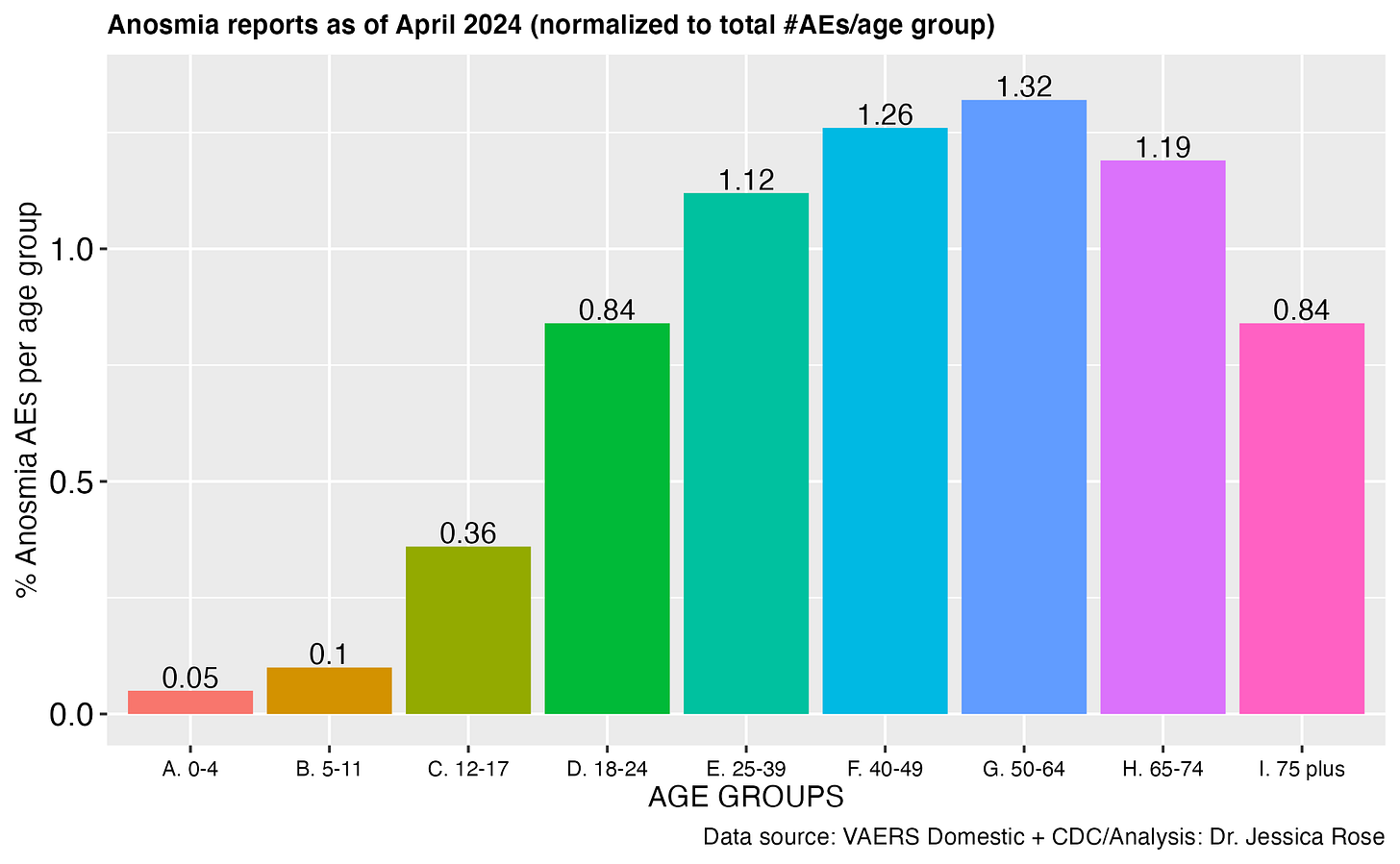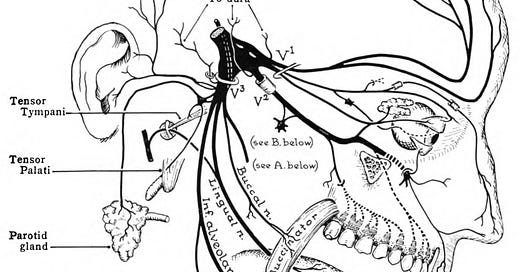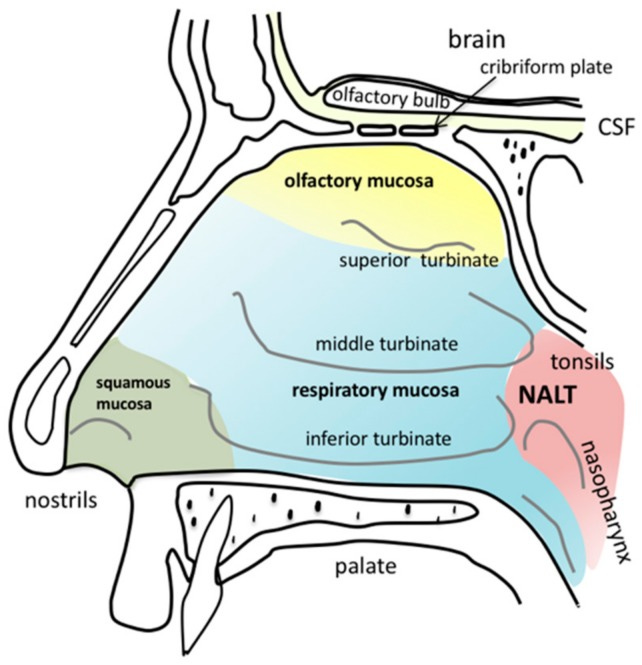Ants, socializing and SARS-2 spike-induced anosmia (loss of smell) in people
Unanswered questions about spike-induced anosmia
I read this terrifying study1 yesterday about ants that had their ability to sense their own kind - by pheromones - CRISPR/Cas-9ed into oblivion. As a result, the gene-altered ants became ‘antisocial’. You can read about that here. Don’t be drinking when you read about this; it made me spit out a bit of my coffee when I did.
I personally think it is cruel to do this to social creatures, and I have serious reservations about the use of the CRISPR-Cas-9 system in living beings in the first place. And that’s an understatement. I did a review on this system that you can read about here.
I have to wonder, especially considering that we indeed study animal models as segues to testing things (like drugs) out in ourselves, why are we doing this? The implications of doing this kind of thing to humans would be staggering. As stated in the abstract: we can study ‘eusociality’ by using ants as a model system. It is debatable whether or not we humans are eusocial or prosocial beings, but this is definitely for another article. Let’s just accept for now that we are social beings and that we need each other to function, just like our ant friends.
I have become so cynical from this COVID crapshoot that I actually find it hard to believe that there are many people left actually interested in answering questions in basic science anymore, I mean, for the sake of biological interest and not subsequent exploitation by psychotic billionaires who want to control the world. That makes me sad.
The article describes using CRISPR-Cas9 generation of germline mutations in a gene in ants that encodes the obligate co-receptor of all smell receptors called the odorant receptor co-receptor (orco) gene.2 When they did this, it affected not only the ants’ ability to sense each other by smell, but their reproductive physiology, and their social behavior plasticity.
I got to thinking about the clinical side effect of the COVID-19 shots and also a very commonly-reported symptom of SARS-2 infection called anosmia - the loss of sense of smell. The loss of taste, of course, accompanies this more often than not.
Anosmia is a neurological symptom that happens when there is damage to olfactory receptor neurons. It can be partial or full on and luckily, usually when the inflammatory response dies down associated with many cases of anosmia, the sense of smell comes back. It can also be caused by destruction of tissue in the temporal lobe of the brain, so this is probably not reversible.
Chemosensory disturbances, including loss of smell or taste, are the predominant neurological symptom of COVID-19.34
Indeed. But it’s more than just smell.
Chemesthesis is the detection of potentially harmful chemicals by the skin and mucous membranes. Chemesthetic sensations arise when chemical compounds activate receptors associated with other senses that mediate pain, touch, and thermal perception. These chemical-induced reactions do not fit into the traditional sense categories of taste and smell.5
Trigeminal nerve (the fifth cranial nerve - aka: Nerve V) stimulation is really important in chemesthesis and chemesthesis is really important to detecting bad chemicals and more.
I have been scratching my head about those brain swab thingies that they forced everyone to get probed with to ‘test for COVID’ for years now. What was that? Like, really. What was that? Why did anyone do that?


Why was it necessary to swab brain matter to ‘get a sample’ of a virus that was soooooo contagious that we weren’t allowed to go anywhere near each for years? Seriously. Brain matter.
Some of those ‘swabbers’ went so deep, they induced bleeding. Even Forbes wrote up the potential dangers associated with this ‘procedure’. There’s a perforated boney structure at the end of the nasal canal that ‘separates’ the nasal cavity from the brain called the cribriform plate. It is perforated to allow olfactory nerves to link the nasal cavity to the brain in order to convey smell signals. I would guess, many of those Taco Bell PPE-sporting parking lot swabbers rammed that ‘swab’ right into it. See what sits right behind it? That’s the olfactory bulb.
The olfactory bulb holds a ton of nerve cells.
A fractured cribriform plate can result in olfactory dysfunction, septal hematoma, cerebrospinal fluid rhinorrhoea (CSF rhinorrhoea), and possibly infection which can lead to meningitis.6
Why weren’t people trained to know that they shouldn’t go so deep with these ‘swabs’ lest they end up leaking someone’s spinal fluid.
But I digress. Let’s get back to the gene editing and anosmia.
Many, many people, including myself, reported losing their ability to smell following exposure to SARS-2. To me, this indicates an attack on the olfactory nerves. The mechanism of action, in my opinion, would be spike-mediated destruction of cells by the immune system. Not an autoimmune thing per se, but an attack on ‘infected cells’ in the olfactory bulb. I would imagine that SARS-2 can infect these cells quite readily and this is why people were losing their sense of smell - due to the immune attack and subsequent inflammation that takes place as part of clearing the virus.
What interests me even more with regard to the effects of the spike protein itself, is the number of people who reported this as an adverse event following COVID-19 product injection. As of April 5, 2024, there are 10,829 reports of Anosmia (including Ageusia - loss of taste) in the VAERS Domestic data. Figure 4 shows the percentage of individuals who reported Anosmia of the total number of reports per age group. These reports are not limited to our elders and, in fact, hover highest in the 50-64-year olds. But still, 1.12% of all adverse events reported by 25-39 year olds was Anosmia.

If we consider an under-reporting factor of 31, the total number of reports of Anosmia/Ageusia goes up to 335,699.
The spike protein itself is a questionable thing. It was made. It has amyloidogenic peptides, a superantigen site, a furin cleavage site, and a lot of other bits that lead to potential molecular mimicry responses. What if there’s a bit that is homologous to a protein in nerve cells? There are many publications now that demonstrate spike and human protein homology, so it is possible.789
I am wondering now about something else, since we don’t really know a lot about what is actually in the COVID-19 injectable product vials, apart from what we have learned from independent discovery. I am wondering about whether it’s possible that we’ve been CRISPRed to prep us for the coming Cas-9, and if so, what is the gene target? I know this sounds nuts, but hear me out.
I wrote about this possibility and questioned a conserved 39-nucleotide sequence in all of the COVID-19 products discovered by Dr. Ah Kahn Syed. I wondered if it’s not got some guide RNA mate. I wondered if Cas-9 is going to be written into the next template code as part of the next round of mandated ‘vaccination’ for the ‘next variant’ or ‘pandemic virus’.
I wonder, is it possible, that someone CRISPRed out our their ability to sense our own kind, like they did with the ants. It’s an insane thought, isn’t it? But, I must say, in addition to the phone zombie mania upon us, and the endocrine disruptors in everything we breathe, eat and drink, perhaps it is possible that another more ‘unavoidably potent’ factor has entered the equation to enhance our antisocial behaviour. Could it be? Has our ability to sense each other by ‘chemical smell’ been disrupted?
I was amazed to find out that it is not really known whether or not we humans actually have pheromones - as in the secreted chemical substances that attract mates that are found with ants. It’s more about smell for us, according to what I read. I would bet money that we indeed have chemical ‘sprays’ that ‘go off’ around each other, though. I think this explains part of why we are attracted to some and repulsed by others.
Having said that, for me personally, smell has always been a huge thing and unfortunately, ever since my own olfactory onslaught from the spike protein-fest from SARS-2 exposure, I cannot stand the smell of most people. It’s mostly the wreak of most perfumes and exogenous sprayed-on odors that I cannot even be around anymore, let alone inhale. I much, much, much prefer to smell people as they are.
Here’s something incredible. Humans can detect blood relatives by smell.10 It has something to do with prevention of inbreeding. Makes sense, right? We have hundreds of functional genes coding for olfactory receptors so to nail one down which would be associated with smell would be a crazy thing to think you could do. It’s a complex system comprising lots of different factors coming together. There is no direct homologous gene in humans for the orco gene found in ants and other insects, if you were wondering, as I was. We have evolved differently from the insects, and our olfactory receptors are not homologous to theirs. Our smell detection system involves G protein-coupled receptors (GPCRs) in the olfactory epithelium. These GPCRs are encoded by a large family of olfactory receptor (OR) genes, which are not directly related to the insect odorant receptor genes.
There a gene called ABCC11 gene that is responsible for under-arm odor. In my research, I also found a study that looked at MHC compatibility between men and women with regard to preferred scents!11
In terms of swapping out a single gene to kill our ability to sense each other by smell, I am not sure this is ‘a thing’. But having said that, there’s a reason why some of us can’t stand cilantro (OR6A2 gene), and are unable to smell stinky fish (TAAR5 gene). It is conceivable that a gene could be altered to influence our ability to sense each other, I think. I just don’t know which one yet.
I am going to leave this article ‘as is’ for now, and leave you with a question to ponder:
Question: When you think about the disruption of smell by either: 1. something in the spike protein that was made in a lab, 2. or the brain swabs, to potentially mess up olfactory nerves, do you think there was intention to mess up smell-ability of us?
Have humans been targeted for an ‘isolation’ experiment? Or if not, is this coming?
Yan H, Opachaloemphan C, Mancini G, Yang H, Gallitto M, Mlejnek J, Leibholz A, Haight K, Ghaninia M, Huo L, Perry M, Slone J, Zhou X, Traficante M, Penick CA, Dolezal K, Gokhale K, Stevens K, Fetter-Pruneda I, Bonasio R, Zwiebel LJ, Berger SL, Liebig J, Reinberg D, Desplan C. An Engineered orco Mutation Produces Aberrant Social Behavior and Defective Neural Development in Ants. Cell. 2017 Aug 10;170(4):736-747.e9. doi: 10.1016/j.cell.2017.06.051. PMID: 28802043; PMCID: PMC5587193
Trible W, Olivos-Cisneros L, McKenzie SK, Saragosti J, Chang NC, Matthews BJ, Oxley PR, Kronauer DJC. orco Mutagenesis Causes Loss of Antennal Lobe Glomeruli and Impaired Social Behavior in Ants. Cell. 2017 Aug 10;170(4):727-735.e10. doi: 10.1016/j.cell.2017.07.001. PMID: 28802042; PMCID: PMC5556950
Lechien JR, Chiesa-Estomba CM, De Siati DR, et al. (August 2020). "Olfactory and gustatory dysfunctions as a clinical presentation of mild-to-moderate forms of the coronavirus disease (COVID-19): a multicenter European study". European Archives of Oto-Rhino-Laryngology. 277 (8): 2251–2261. doi:10.1007/s00405-020-05965-1
Xydakis MS, Dehgani-Mobaraki P, Holbrook EH, et al. (September 2020). "Smell and taste dysfunction in patients with COVID-19". The Lancet. Infectious Diseases. 20 (9): 1015–1016. doi:10.1016/S1473-3099(20)30293-0
https://en.wikipedia.org/wiki/Chemesthesis
https://en.wikipedia.org/wiki/Cribriform_plate
Nunez-Castilla J, Stebliankin V, Baral P, Balbin CA, Sobhan M, Cickovski T, Mondal AM, Narasimhan G, Chapagain P, Mathee K, et al. Potential Autoimmunity Resulting from Molecular Mimicry between SARS-CoV-2 Spike and Human Proteins. Viruses. 2022; 14(7):1415. https://doi.org/10.3390/v14071415
Kanduc D, Shoenfeld Y. Molecular mimicry between SARS-CoV-2 spike glycoprotein and mammalian proteomes: implication for the vaccine. Immunol Res (2020) 68(5):310–3. 10.1007/s12026-020-09152-6
Lyons-Weiler J. Pathogenic priming likely contributes to serious and critical illness and mortality in COVID-19 via autoimmunity. J Transl Autoimmun (2020) 3:100051. 10.1016/j.jtauto.2020.100051
Porter, RH; Cernoch, JM; Balogh, RD (1985). "Odor signatures and kin recognition". Physiology & Behavior. 34 (3): 445–448. doi:10.1016/0031-9384(85)90210-0
Randy Thornhill, Steven W. Gangestad, Robert Miller, Glenn Scheyd, Julie K. McCollough, Melissa Franklin, Major histocompatibility complex genes, symmetry, and body scent attractiveness in men and women, Behavioral Ecology, Volume 14, Issue 5, September 2003, Pages 668–678, https://doi.org/10.1093/beheco/arg043







Just imagine where it all comes from. No, it’s not about science or about learning how our body operates. If it were, you would care about the “subjects” of your merciless experiments.
Hatred of humanity.
Only this explains the deliberate pushing of the nastiest poison ever designed (meticulously, down to the smallest details and destructive interactions it can inflict) on everybody, the whole humanity, in the farthest corners of the world, from newborns to the elderly - all with a smile and “safe and effective” lullabies.
Now you know whom you are facing. Human beings are not like that.
Years ago I read that psychopath murderers have a poor sense of smell. Pregnant women have a heightened sense of smell. Smell is so very important to social interactions. Bill Gates can’t even smell his own shit.